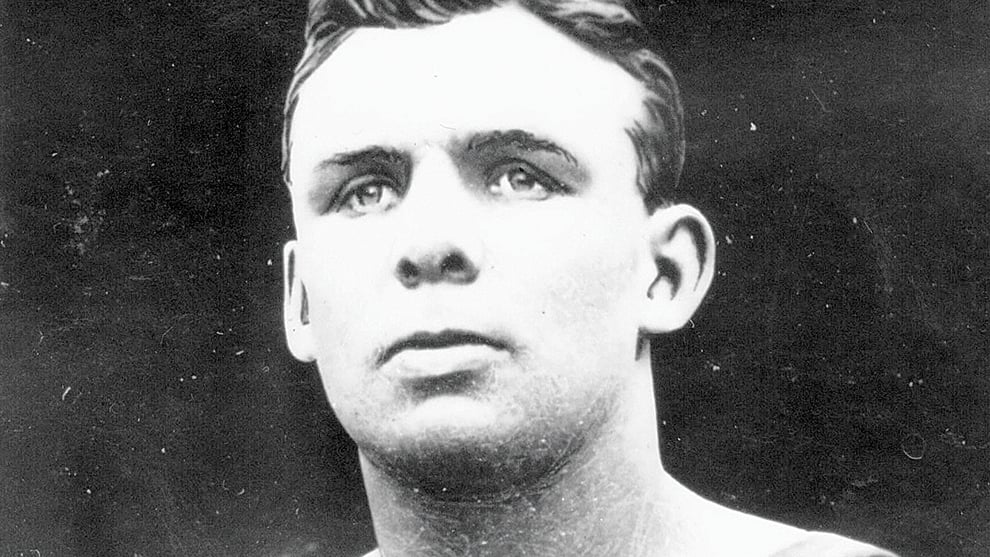By Miles Templeton
I met promoter Mo Prior at a recent show and was interested to learn that his wife is related to Joe Beckett, the British heavyweight champion between 1919 and 1923. Regular readers may recall the article I produced in January 2023 detailing Beckett’s contest, and spat, with Tommy Burns in 1919. He is best remembered, sadly, for his two contests with Georges Carpentier (pictured below), one of which resulted in a 15-second defeat, but Joe was a decent heavyweight who usually provided excitement and thrills throughout his up-and-down career.

He was a character outside the ring, too, and was very fond of horse-racing, or more particularly the gambling side of that sport, and when he retired from the ring he lived well, having invested his ring earnings wisely. During World War I, Joe was an air mechanic with the Royal Flying Corps and, as the newly-crowned British heavyweight champion in 1919, he was mooted as a potential opponent for Jack Dempsey, the world heavyweight champion. The two losses to Carpentier and a bad knockout defeat at the hands of the American Frank Moran put paid to those hopes.
During my conversation with Mo, it became clear that he was unaware that Joe had a boxing brother who was no mean fighter himself. George Beckett was a very capable middleweight boxer whose career spanned the years 1907 to 1920. The two brothers came from Southampton and during the Edwardian era that town was not noted for providing opportunities for young fighters. Consequently, George had to go up to London to make his debut. He did so in the austere setting of the National Sporting Club, at that time the heart and soul of British boxing and the most famous boxing venue in the world.
George entered a middleweight competition in October 1907 and, after winning five contests, he won the event. In the first bout, George knocked out Patsy Cokely in a matter of seconds and followed this up with four more inside the distance victories, three by clean knockout. The patrons of the Club recognised talent when they saw it and George was matched in his first 10-rounder, at the same premises, three months later.
Unfortunately, he came a cropper at the hands of a sailor, Seaman Kelly of HMS Jupiter, in three rounds. He then beat Kelly twice in rematches and, in 1909, he won his first 15-rounder, again at the Club. In 1910, he beat the Irishman Jim Maher in a 20-rounder at Wonderland and then, in another rematch, he repeated the feat at The Dell, the former home ground of Southampton Football Club, and this victory really put George on fistic map.
In 1911, George boxed against two British middleweight champions. Pat O’Keefe held the title three times between 1906 and 1919 and he defeated Beckett in a 10-rounder at the NSC. Jack Harrison of Rushden held the title during 1912 and 1913 and he also beat George at the NSC in a 15-rounder in December 1911 in what BN described as a “Great Contest”.
George was at the forefront of the British middleweight scene throughout the years leading up to World War I and in March 1913 he was matched against Carpentier himself, six years before his famous brother had the misfortune to come up against the brilliant Frenchman, but then Carpentier injured his hand, and the bout was cancelled. As it did with so many other great prospects, the war significantly interfered with George’s boxing career, and I can only find one contest for him during this period.
While serving on the Western Front with the Army Service Corps he won one contest behind the lines. His last two contests took place after the war, both for the Hampshire heavyweight title against fellow-townsman, Albert Croucher. George lost the first contest and then won the rematch, and he retired as Hampshire champion. His career was less successful than that of his famous brother, but George Beckett was a credit to the sport.






